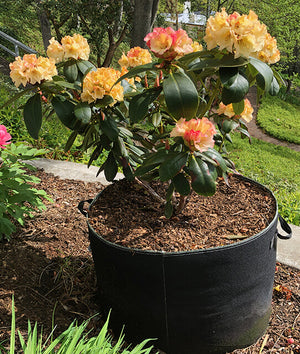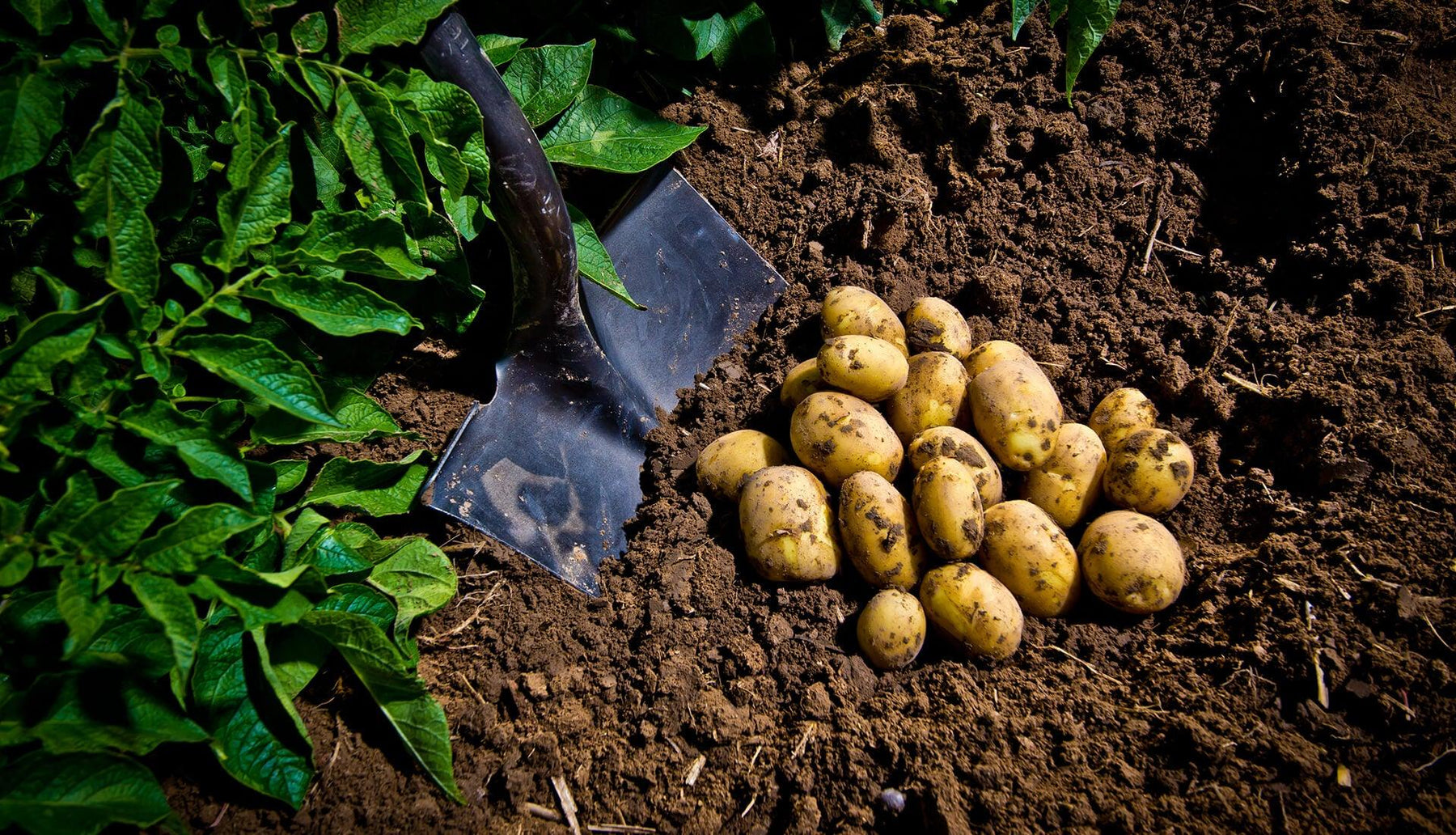
Everything You Need to Know About Potato Grow Bags
Growing vegetables in your garden is an awesome feat if you’re into cooking, sustainability, and efficiency. And, in some ways, it can be easier than you think.
However, not all vegetables are the same, and they tend to have different types of roots as well as varying requirements when it comes to water, sunlight, space, and more. And, if you want to grow each vegetable effectively, it’s essential that you know exactly what it needs to be able to thrive.
Potatoes are often seen as a pretty hardy food – a robust vegetable that has been grown by many different people throughout time, in various parts of the world, as a main food source. And, this most certainly isn’t wrong! However, it gets a little bit more complicated when you’re growing vegetables in a garden as opposed to on a farm with nearly unlimited space.
So, we recommend using potato growbags. They’re specifically designed – in shape, depth, and material – for growing potatoes, and they offer a plethora of advantages to using them in your garden. Not only will your potato growing experience be far more successful when you use growbags, but it’ll also make your life a whole lot easier and you’re less likely to run into major difficulties in the process.
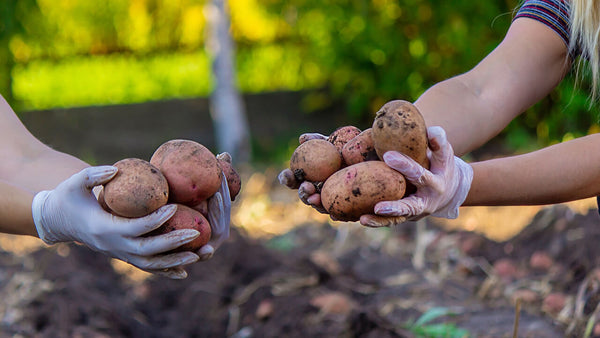
If you grow potatoes in your garden, or if you’re looking to give it a go, stick around while we tell you all about exactly what potato growbags are, what makes them different to other types of growbags, the advantages of using them, and so much more.
What is a Growbag?
If you’re new to gardening or just the idea of growbags specifically, don’t fret – we’re going to tell you all about growbags so that you can properly understand why you should be using them to grow potatoes in your garden.
So, starting off simply, a growbag is a container that is designed for growing plants. Growbags can be made from a variety of different materials – some are soft and made from fabric, while others are more rigid, made from things like plastic. It all depends on what you’re trying to grow and how much space you have in your garden.
Planting something in a growbag means that you can control the amount of space it takes up, as well as where and how it grows – this is most important for the roots. A growbag can help ensure that the roots of the plant don’t become coiled or tangled up with other plants grown nearby.
And there are several other advantages to growbags – they encourage and allow for aeration, temperature regulation, and water efficiency. Using growbags makes your plants portable, easy to harvest, and they allow you to use the space in your garden efficiently. But we’ll get more into the details of the advantages of using potato growbags later!
Essentially, by using growbags, you simply place soil in the growbag, plant the vegetable in the soil, and position the filled growbag in a hole in your garden. Best of all, you’ll be the only one that knows you’re using growbags – nobody else will be able to see the bag buried beneath the soil!

So, now that you know exactly what a growbag is, let’s dive right into potato growbags and what makes them different from other types.
What Makes a Potato Growbag Different?
While the basic concept of a growbag is the same for most types, there are a few features of potato growbags that set them apart.
Here are the main things that make potato growbags different to other types of growbags, and why these differences are so important.
- Size and Shape: Potato growbags are larger and deeper than ordinary growbags. This is because potatoes tend to have pretty long roots, so it’s essential that the growbag allows sufficient space for growth. And, in addition to simply providing enough space for the roots of the plant to grow, a larger growbag also means that there’s more soil (which provides sustenance for the plant) and more space for water.
- Material: Growbags can be made from different materials – some are fabric (and normally, the term “growbag” does refer to the fabric versions) but they can also be made from plastic, more like little containers. However, potato growbags are made from fabrics that allow for the perfect balance of drainage, aeration, and insulation.
- Access Flaps: Not all growbags feature access flaps, but many potato growbags specifically have little access flaps that allow you to check on the progress of the growth of your potatoes without interfering with the overall success of the growth of the plant. This can be handy for determining whether or not you’re providing the plant with sufficient water, nutrients, and more.
- Visual Design: When it comes to growing potatoes, it can be a little tricky to know exactly when you should be harvesting them. So, many growbags (but not all) are made from clear fabric so that you can see straight through them, allowing you to check up on their growth and progress.
So, while growing potatoes isn’t necessarily the most complicated and difficult process in the world, it is important that you’re following the right process to be able to have the best results. And, using growbags – specifically, potato growbags – will help ensure that you’re successful in your vegetable growing venture. You can purchase potato grow bags.
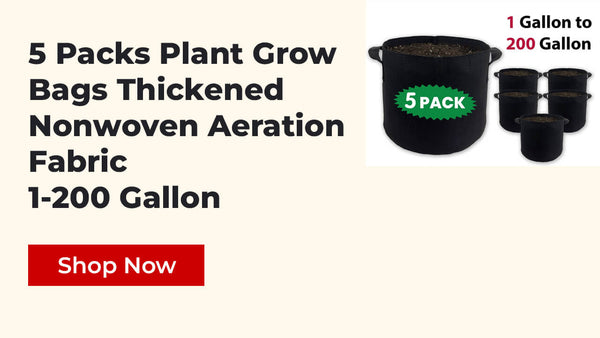
Alternate Options for Growing Potatoes
Now you know all about what growbags are and how potato growbags tend to differ from ordinary growbags. However, using potato growbags isn’t the only way that you can successfully grow potatoes – you can also grow potatoes in a bucket or in containers.
But, we maintain that growbags are the best option, because they’re specifically designed for the way in which potatoes grow and how their roots form. And, they cater to all the needs of potato plants.
However, you don’t need to take our word for it. We’re going to give you a quick run down of how to grow potatoes in a bucket or a container so that you can have your own understanding of why we believe growbags are more conducive to potato cultivation and growth.
When it comes to how to grow potatoes in a container or a bucket, the process is fairly siply – in fact, it’s pretty much exactly the same as how you’d plant and grow potatoes any other way. However, the fact they’re growing in a solid plastic container as opposed to in nothing or in a fabric growbag will change the way in which they grow.
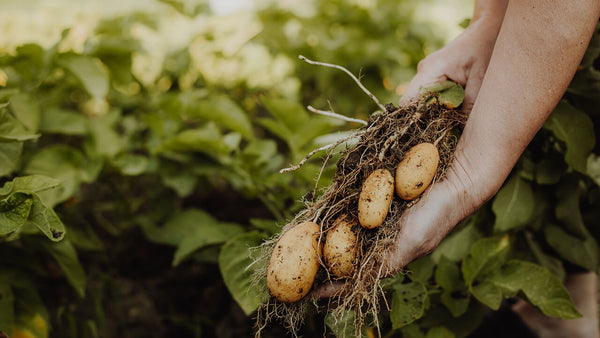
Let’s have a quick look at the pros and cons of growing potatoes in a container:
Pros of Growing Potatoes in a Container
- Space Efficiency: Much like potato growbags, using a container will help you utilize the space in your garden efficiently. So, when it comes to planting them directly in the soil or in a container, the latter will help you organize and even save space. And, it’ll keep the plant and its roots contained.
- Portability: If you’re growing your potatoes in a container, you can very easily dig out the entire container and move the whole plant without disrupting its growth. This is great if you’re concerned about the plant not getting enough sunlight (or too much sunlight), as well as because of rain, or even just rearranging your garden.
- Control the Soil: When your potatoes are growing in a container, you can control the soil they’re growing in. This means monitoring the soil quality and ensuring that the potatoes have allow the nutrients that they need.
- Pest Control: Its significantly easier to control the pests that attack your plants when they’re confined to a container. It can also help to generally minimize certain pests and diseases that may affect your potatoes, because they’re far more likely to be vulnerable to these things if they’re planted directly in the ground.
Cons of Attempting to Grow Potatoes in Containers
- Water Challenges: Since containers aren’t permeable at all (in the way that the fabric of a growbag is), it ca be challenging to ensure that your plants maintain moisture. They can also dry out more easily and it can be tough to maintain consistent moisture.
- Limited Yield: Containers dictate the yield of your potato plant, and this tends to restrict the overall yield compared to growbags or planting directly in the ground.
- Root Space: Some plants don’t have big or deep roots so having limited space for growth isn’t necessarily a problem. However, potatoes have long and deep roots, so space is pretty important for root growth and development.
- Temperature Regulation: Similarly to the issues you may have with water due to a lack of permeability, temperature regulation can be tough in a container. Since they tend to be made from plastic, the soil often heats up significantly and very quickly which isn’t particularly good for the potato plants.
When it comes down to it, the cons of growing potatoes in containers far outweigh the pros. And, most importantly, all of the advantages associated with using containers are also true for potato growbags – however, the growbags don’t bring with them all the negatives!
But, are containers and growbags the only options for growing potatoes? Of course not – we’ve still got the good old traditional method of planting them directly into your garden beds.
Here are some of the main pros and cons of planting potatoes directly into the soil in hour garden:
Pros of Planting Potatoes Directly into the Garden Beds
- Unlimited Space: The potato plant and its roots aren’t restricted in terms of space, and its long roots can grow as far and deep as they need.
- Easier to Manage Moisture: Unlike growing potatoes in a container, it’s easier to ensure that the plant remains well watered and moist.
- Temperature Self Regulates: When they’re planted directly into the soil, the potato plant will self-regulate its temperature, because there aren’t outside factors (like plastic) to throw things off balance.
Cons of Planting Potatoes Directly into the Garden Beds
- Fixed Position: Unlike when you use growbags and containers, the plants are fixed and stuck where you plant them, and you can’t move them without completely disrupting the plant’s growth.
- Difficult to Control Pests: It’s not impossible, but controlling pests in your garden can be difficult when your plants aren’t separated. They’re completely vulnerable to anything and everything that’s introduced to your garden and other nearby plants.
- No Root Control: When they’re growing freely, you have no control over where and how the roots grow. And with potatoes, which have long roots, this can be problematic if they grow in the wrong direction or get tangled up in other plants’ roots. And, you also won’t be able to see or do anything about it if this does happen.
- Difficult to Organize Plants: Planting potatoes freely leaves you with very little control over the organization of your garden, because they may very well just grow wherever they like.
At the end of the day, both containers and free garden growing introduce several significant cons when it comes to growing potatoes, none of which are issues if you choose to use potato growbags.
So, the best option for growing potatoes is using potato growbags, and just in case you’re not already convinced, we’re going to tell you a little bit more about what we think growbags are the best option for potato growing.
How to grow potatoes in a bag
Why You Should Use Growbags for Potatoes
By now, we’ve given you a pretty extensive explanation of why potato growbags are effective and why they’re better than other alternatives. So, here’s a quick summary of exactly why we think you should always choose potato growbags for your garden.
- Space Efficiency: You can easily organize how and where your potato plants grow so that you can make efficient use of the space in your garden.
- Portability: Rearranging your garden is far easier, and you can remove and replant your potatoes without disrupting their growth.
- Aeration: Because of the permeability of the fabric, potato growbags allow for excellent aeration so things can stay fresh and healthy.
- Temperature Regulation: Again, since the fabric of potato growbags is permeable, the plant and soil are able to self-regulate in the most natural way possible.
- Soil Control: It’s easy to control the soil and its nutrients, as well as to monitor exactly how healthy it is and what may need more or less of. And, if you need to make changes, it’s far easier to change and replace soil in a growbag than in other setups.
- Easy Harvest: Since you can remove the entire growbags from the ground, potatoes are super easy to harvest when they’re growing in potato growbags.
- Pest Control: Plants in growbags are reasonably protected from the threat of pests that may affect other plants in your garden. That is, it’s easier to prevent the spread or isolate a pest problem if you’re using potato growbags.
- Appropriate Size and Depth: Most importantly, potato growbags are specifically designed to be large and deep enough for the long roots of a potato plant.
What Size Growbag Do I Need For Potatoes?
It all depends on what kind of potatoes you want to grow and how many you want to grow in each growbag, but here are a few options.
The smallest you could go would be a two-gallon growbag, but that would only be enough for one plant. From there, you could use a five-gallon growbag for two, and you could grow about four in a 10-gallon growbag.
From there, we generally recommend that you don’t go beyond 10 to 15-gallon growbags, and if you want to grow more potatoes, rather by more separate bags.
Final Thoughts on Using Potato Growbags
If you’re considering the possibility of using potato growbags in your garden, we absolutely believe that it’s the best option – not only for efficiency and making your life easier, but also for the effectiveness of the growth of your potatoes.
There’s no doubt that when compared to other options, you should always choose to grow potatoes in a bag rather than directly into your garden beds or in other types of containers. And, best of all, there’s no reason to be concerned about how to grow potatoes in a bag, because the process is simple and easy to manage.
Browse our selection of potato growbags today!



